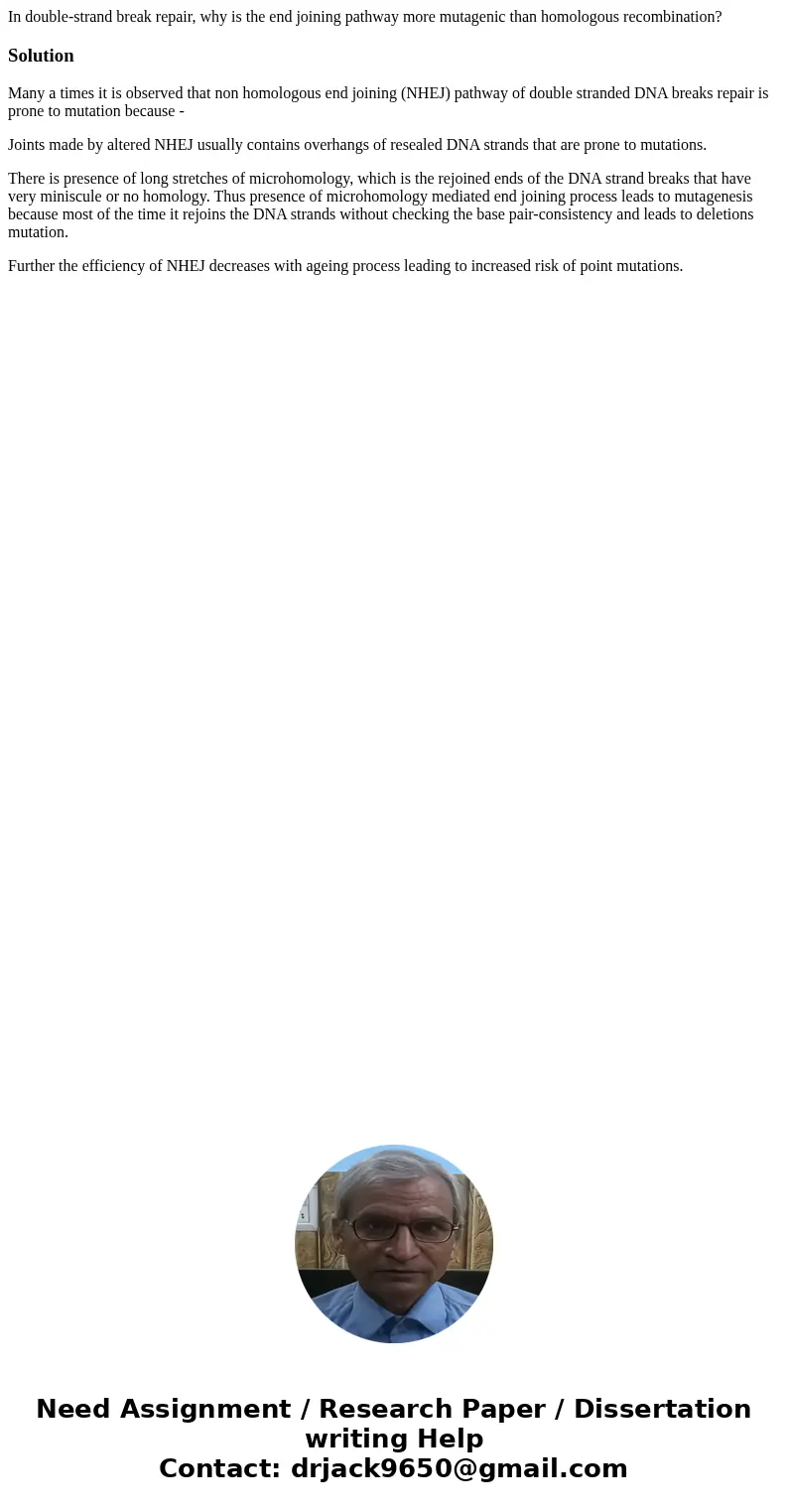In doublestrand break repair why is the end joining pathway
In double-strand break repair, why is the end joining pathway more mutagenic than homologous recombination?
Solution
Many a times it is observed that non homologous end joining (NHEJ) pathway of double stranded DNA breaks repair is prone to mutation because -
Joints made by altered NHEJ usually contains overhangs of resealed DNA strands that are prone to mutations.
There is presence of long stretches of microhomology, which is the rejoined ends of the DNA strand breaks that have very miniscule or no homology. Thus presence of microhomology mediated end joining process leads to mutagenesis because most of the time it rejoins the DNA strands without checking the base pair-consistency and leads to deletions mutation.
Further the efficiency of NHEJ decreases with ageing process leading to increased risk of point mutations.

 Homework Sourse
Homework Sourse